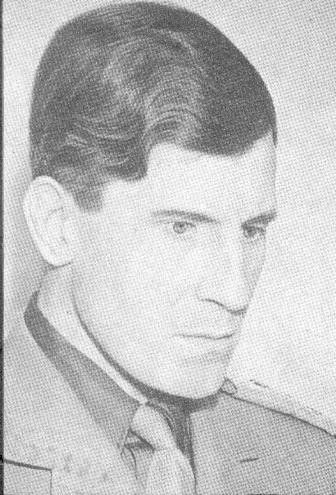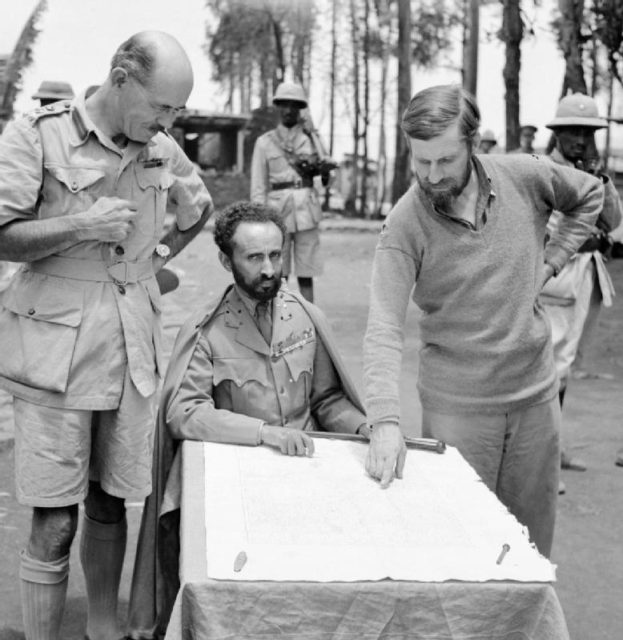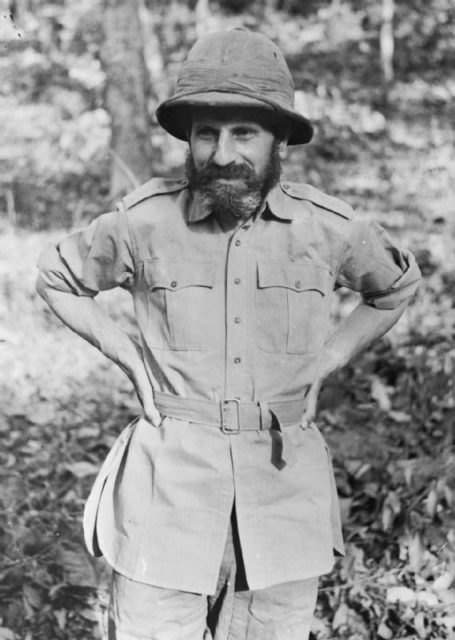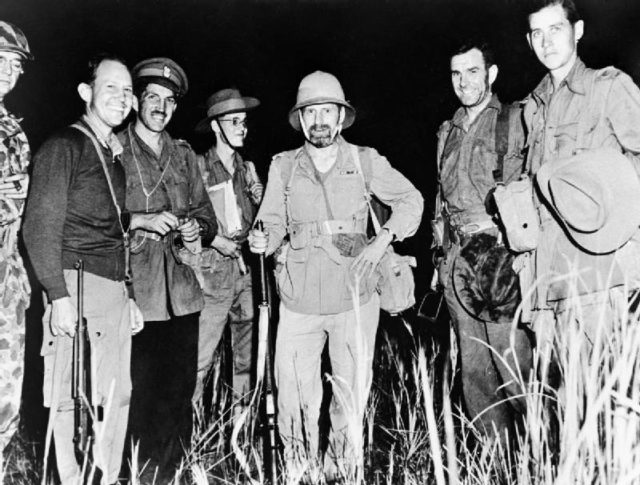Orde Wingate was the most unusual British commander of World War Two. Loved by some of his colleagues and hated by others, his reputation remains controversial to this day.
An Unconventional Youth
Born to British parents in India in 1903, Orde Wingate grew up in Britain, living with other relatives at times when his parents were in India. His family was strict Plymouth Brethren – conservative, evangelical, non-conformist Christians. They worked hard to instill their values in Orde.
At school, he was friendless. Not playing games or attending assemblies singled him out as different. He had known few children when he was young and struggled to socialize. Coupled with a willingness to challenge authority, this left him isolated and lonely.
Into the Army
In 1920, Wingate entered the Royal Military Academy at Woolwich. There he had similar problems to those he had at school. Harsh treatment by his fellow cadets left him determined never to be left at the mercy of mob rule.
In 1923, Wingate entered the Royal Artillery.

An encounter with a family member who had been Governor-General of Sudan encouraged him to look east, learning Arabic. In 1930, he became an officer in the Sudan Defence Force. There he gained experience of independent command, impressing his superiors but aggravating his peers, who found him personally unbearable.
The British Army was dominated by discipline and by the most conservative elements of the British upper class. It was not a place for dissent.
Palestine
In 1936, Wingate was sent to Palestine as an Intelligence Officer.
The region was a mess. Its post-war carve-up by European powers had ignored local interests and broken promises. Jewish settlement created a backlash by Palestinians.
Wingate’s Old Testament upbringing and contacts in the Jewish elite led him toward Zionism. It further aggravated his fellow officers, who were mostly sympathetic to the Arabs.

Worst of all, in army eyes, Wingate worked around the chain of command. By going straight to General Wavell, he got support for his rejected ideas. He set up, trained, and led Jewish militia units fighting against Arab terrorists.
In all of this, Wingate showed courage, intelligence, innovation, strong moral character, and an utter insensitivity to those who disagreed with him. These were the characteristics that would polarize opinions.
Abyssinia
Wingate was back in Britain when WWII was declared. In 1940, he was sent to join forces fighting the Italians in Abyssinia. There, he impressed the local leader Haile Selassie with his enthusiasm for the fight.
Given command of Gideon Force, Wingate won significant victories against the Italians. He also learned a great deal about guerrilla warfare, including the value of effective radio communications and air supply.
Dark Times
After convincing 10,000 Italians to surrender at Agibar, Wingate was recalled to Cairo. His unit was disbanded, and he was demoted from colonel to major. The establishment was punishing him for his willful attitude.
After catching cerebral malaria, Wingate was treated with Atabrine. In July 1941, he tried to kill himself but was saved by a fellow officer. The attempted suicide became a blot on his reputation in a society unsympathetic to such apparent weakness. It was later discovered that Atabrine can make patients suicidal.
He returned to Britain, resentful at his treatment, and was comforted by his family.
Founding the Chindits
In March 1942, Wingate arrived in India for his next posting, reinstated as a colonel. There he met Michael Calvert, an officer with whom he saw eye to eye.
Despite opposition from the entrenched British officers of the Indian Army, Wingate and Calvert created something new. The Chindits were a force of British and colonial soldiers trained for guerrilla fighting deep behind enemy lines.

Operation Longcloth
The first use of the Chindits was Operation Longcloth. A test of Wingate’s idea of Long Range Penetration (LRP), it was originally meant to be part of a general advance, although that offensive was abandoned.
In February 1943, 3,000 Chindits marched into the Burmese jungle, crossing mile-wide rivers to get behind Japanese lines.
Calvert led an assault on Nankan station, inflicting heavy losses on the Japanese and destroying vital infrastructure. Bernard Ferguson led a similar attack at Bonchaung Gorge although there they incurred a loss of lives.
Inadequate information led Wingate to advance into unfriendly terrain. His troops were then recalled and endured an exhausting march back to base.
1,000 men were lost, but in doing so, they severely disrupted Japanese activity in the region.
Friends in High Places
While the Chindits recovered, Wingate accompanied Winston Churchill to the Quebec Conference on Allied strategy. There he gained support from high command, including both Churchill and President Roosevelt, for another Chindit LRP operation.

Operation Thursday
Launched on March 5, 1944, Operation Thursday involved dropping 12,000 troops by air behind Japanese lines. There they set up Strongholds, another new concept of Wingate’s.
Strongholds were heavily fortified camps, based well away from main roads and railways to avoid artillery and tanks. Supplies came in and wounded troops left by air. From their Strongholds, the Chindits could attack supply lines over a wide area.
Despite losses during the landings, Operation Thursday was initially a success. Three Strongholds were set up, and the Chindits started ambushing the Japanese.
On March 24, Wingate was killed in a plane crash. His operation was taken over by men who did not believe in his tactics. Many lives were lost as the Strongholds were abandoned for weaker bases and more direct attacks on the Japanese.
A Legacy of Controversy
Long after his death, Wingate remains a controversial figure. Admirers talk about his courage, boldness, and innovation. Detractors talk about indiscipline and lives lost. His status as a hero among Zionists only adds to the controversy.
Wingate may always be a divisive figure. What no-one can deny is that he was willing to stand his ground.
Source:
David Rooney (1999), Military Mavericks: Extraordinary Men of Battle.
